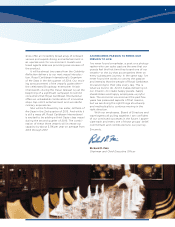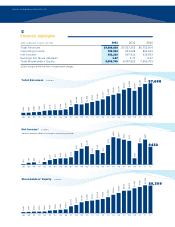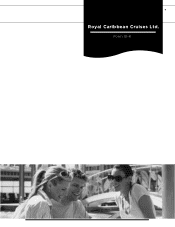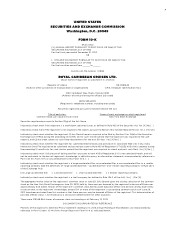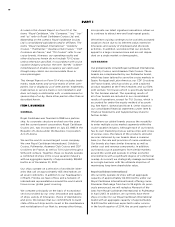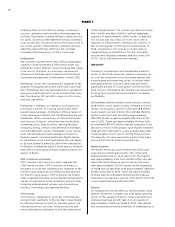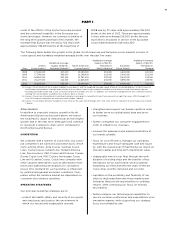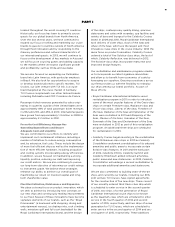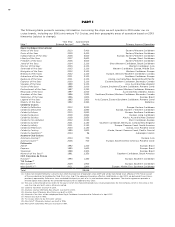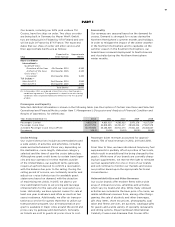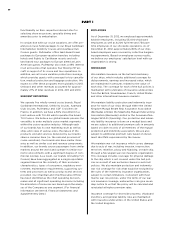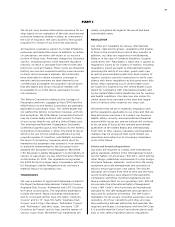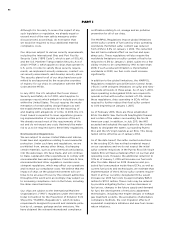Royal Caribbean Cruise Lines 2012 Annual Report Download - page 17
Download and view the complete annual report
Please find page 17 of the 2012 Royal Caribbean Cruise Lines annual report below. You can navigate through the pages in the report by either clicking on the pages listed below, or by using the keyword search tool below to find specific information within the annual report.
13
result of the effects of the Costa Concordia incident
and the continued instability in the European eco-
nomic landscape. However, we continue to believe in
the long term growth potential of this market. We
estimate that Europe was served by 102 ships with
approximately 108,000 berths at the beginning of
2008 and by 117 ships with approximately 156,000
berths at the end of 2012. There are approximately
9 ships with an estimated 25,000 berths that are
expected to be placed in service in the European
cruise market between 2013 and 2017.
The following table details the growth in the global, North American and European cruise markets in terms of
cruise guests and estimated weighted-average berths over the past five years:
Year
Global
Cruise Guests(1)
Weighted-Average
Supply of Berths
Marketed Globally(1)
North American
Cruise Guests(2)
Weighted-Average
Supply of Berths
Marketed in
North America(1)
European
Cruise Guests
Weighted-Average
Supply of Berths
Marketed in
Europe(1)
() Source: Our estimates of the number of global cruise guests, and the weighted-average supply of berths marketed globally, in North America
and Europe are based on a combination of data that we obtain from various publicly available cruise industry trade information sources
including Seatrade Insider and Cruise Line International Association (“CLIA”). In addition, our estimates incorporate our own statistical analysis
utilizing the same publicly available cruise industry data as a base.
() Source: Cruise Line International Association based on cruise guests carried for at least two consecutive nights for years 2008 through 2011.
Year 2012 amounts represent our estimates (see number 1 above).
() Source: CLIA Europe, formerly European Cruise Council, for years 2008 through 2011. Year 2012 amounts represent our estimates (see number
1 above).
Other Markets
In addition to expected industry growth in North
America and Europe as discussed above, we expect
the Asia/Pacific region to demonstrate an even higher
growth rate in the near term, although it will continue
to represent a relatively small sector compared to
North America and Europe.
COMPETITION
We compete with a number of cruise lines. Our princi-
pal competitors are Carnival Corporation & plc, which
owns, among others, Aida Cruises, Carnival Cruise
Lines, Costa Cruises, Cunard Line, Holland America
Line, Iberocruceros, P&O Cruises and Princess Cruises;
Disney Cruise Line; MSC Cruises; Norwegian Cruise
Line and Oceania Cruises. Cruise lines compete with
other vacation alternatives such as land-based resort
hotels and sightseeing destinations for consumers’
leisure time. Demand for such activities is influenced
by political and general economic conditions. Com-
panies within the vacation market are dependent on
consumer discretionary spending.
OPERATING STRATEGIES
Our principal operating strategies are to:
• protect the health, safety and security of our guests
and employees and protect the environment in
which our vessels and organization operate,
• strengthen and support our human capital in order
to better serve our global guest base and grow
our business,
• further strengthen our consumer engagement in
order to enhance our revenues,
• increase the awareness and market penetration of
our brands globally,
• focus on cost efficiency, manage our operating
expenditures and ensure adequate cash and liquid-
ity, with the overall goal of maximizing our return on
invested capital and long-term shareholder value,
• strategically invest in our fleet through the revit
alization of existing ships and the transfer of key
innovations across each brand, while prudently
expanding our fleet with the new state-of-the-art
cruise ships recently delivered and on order,
• capitalize on the portability and flexibility of our
ships by deploying them into those markets and
itineraries that provide opportunities to optimize
returns, while continuing our focus on existing
key markets,
• further enhance our technological capabilities to
service customer preferences and expectations in an
innovative manner, while supporting our strategic
focus on profitability, and
PART I


